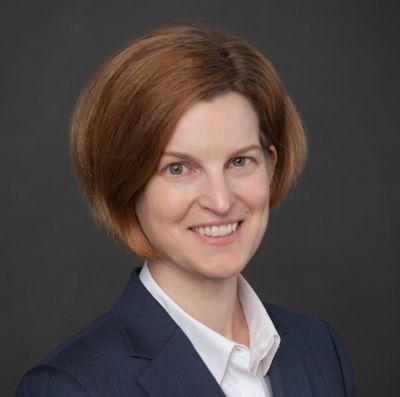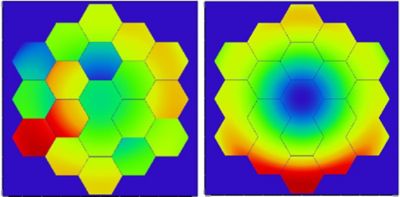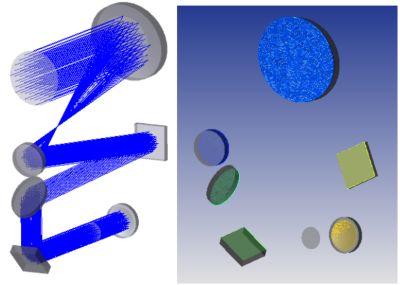-
-
학생용 무료 소프트웨어에 액세스하기
차세대 엔지니어에게 힘을 실어주는 Ansys
학생들은 세계적 수준의 시뮬레이션 소프트웨어를 무료로 이용할 수 있습니다.
-
지금 바로 Ansys에 연결하십시오!
미래를 설계하기
시뮬레이션이 다음 혁신을 어떻게 지원할 수 있는지 알아보려면 Ansys와 연결하십시오.
국가
무료 트라이얼
제품 및 서비스
학습하기
회사 정보
Back
제품 및 서비스
ANSYS BLOG
December 29, 2021
Women in Technology: Shooting for the Stars with Space Telescope Development
The development and creation of the James Webb Space Telescope (JWST) — a new telescope that may transform our understanding of the universe — involved many bright and talented engineers. Erin Elliott, an optical engineer at Zemax, was one of those people.
She grew up on a Minnesota farm in a house full of books and magazines. When young Erin read a National Geographic article about the life cycle of stars, her interest in astronomy was born. She majored in physics and astronomy at the University of Minnesota and received her doctorate in optical science from the University of Arizona. Her dissertation was on segmented imaging systems and how to design themi — foreshadowing the part she& would play in developing the JWST. While at Arizona, she contributed to the Large Binocular Telescope (LBT)ii and the Giant Magellan Telescope (GMT)iii, among other segmented systems.

Sights Set on Space
Erin went to work at an optical engineering firm right out of college where she worked on telescope designs and proposals, Earth-imaging satellites, and the JWST. One of her more exciting projects was helping with proposals for the Terrestrial Planet Finder (TPF).
“The TFP included a competition between interferometric and coronograph designs for giant telescopes that could detect Earth-like extra-solar planets. Unfortunately, NASA decided that the technology was still just out of reach and tabled the TPF project,” she explained.
Along with another engineer, Erin went on to invent a new optical test that relied on Moire fringes to measure distortion over the field of view of an imaging system in a single snapshotiv.
Aligning the Mirrors with Ansys Zemax
Erin was a key part of the team that designed and built the software and hardware used to align the 18 hexagonal segments in the JWST’s primary mirrorv. The segments must be aligned to better than 100 nanometers using imagery from the NIRCam camera on board the telescope. A multi-step alignment process was developed in simulation and tested in a 1/7 scale testbed telescope. The simulation and the hardware were used in tandem to prove that the primary mirror of JWST could be aligned.
Erin used Ansys Zemax software extensively during the design and test of the alignment software. Double-pass optical models of the segmented testbed enabled the team to try out new alignment ideas before finalizing and trying them with the hardware. She made major contributions to the Coarse Phasing and Multifield steps in the alignmentvi. Erin created custom add-ons for Zemax that simulated spectra produced by the Dispersed Hartmann Sensors for Coarse Phasing, and also created custom add-ons to analyze the aberration signals produced during the Multifield step.
“With these custom add-ons we learned that a combination of aberrations could be used to check the final alignment,” Erin explained.

An optical model of JWST-like primary mirror segments, with piston errors in the image on the left, and in its perfectly aligned state on the right.
Erin also led the effort to design and manufacture the alignment hardware that was added to the NIRCam instrument. And she created further custom software to statistically analyze the state of the flight telescope at each point in the alignment process. This allowed for translating results from the testbed telescope to the on-orbit situation using models of the full JWST system. The statistical models also helped to predict when other instruments and tools on board — such as the star trackers — could start to receive usable images.
Charting a New Course
Erin continued her work on JWST at the Space Telescope Science Institute, and then changed course by joining Zemax, where she had the opportunity to work on optical engineering software. She initially worked to solve tricky customer problems, designed and taught courses on using the software, and created webinars and tutorial content for conferences.
Erin then shifted to research and development and was a key part of the team that developed the STAR software, which adds stress and thermal perturbations to optical models in Zemax OpticStudio. She designed and prototyped multiple tools for STAR, and worked to make the software highly visual and easy to use. She currently leads the Applications Development team, which provides technical leads for new features in Ansys Zemax software products, ensuring that they meet customers’ needs.

Using the Ansys Zemax OpticStudio STAR software to add deformations (generated by FEA analysis) to the optical model of a mirror system.
References:
- i. E. Sabatke, J. Burge & P. Hinz. “Optical design of interferometric telescopes with wide fields of view,” Applied Optics 45 (31), (2006).
- ii. C. McCarthy, E. Sabatke, R. Sarlot, P. Hinz, & J. Burge. “Cryogenic beam-combiner for very low background 2- to 20-µm interferometry on the 22.8-m Large Binocular Telescope," Proc. SPIE 4006 (2000).
- iii. E. Sabatke, J. Burge & D. Sabatke. “Analytic diffraction analysis of a 32-m telescope with hexagonal segments for high-contrast imaging,” Applied Optics 44 (8), (2005).
- iv. E. Sabatke, L. Dettmann, A. Pierce, & D. Sabatke. “A snapshot distortion test using Moire fringes,” Proc. SPIE 6676 (2007).
- v. Verification of the James Webb Space Telescope (JWST) wavefront sensing and control system. A. Contos, et. al. Proc. SPIE 7010: Space Telescopes and INstrumentation 2008: Optical, Infrared, and Millimeter. August 2008
- vi. E. Sabatke et al. “Using multifield measurements to eliminate alignment degeneracies in the JWST testbed telescope,” Proc. SPIE 6687 (2007).